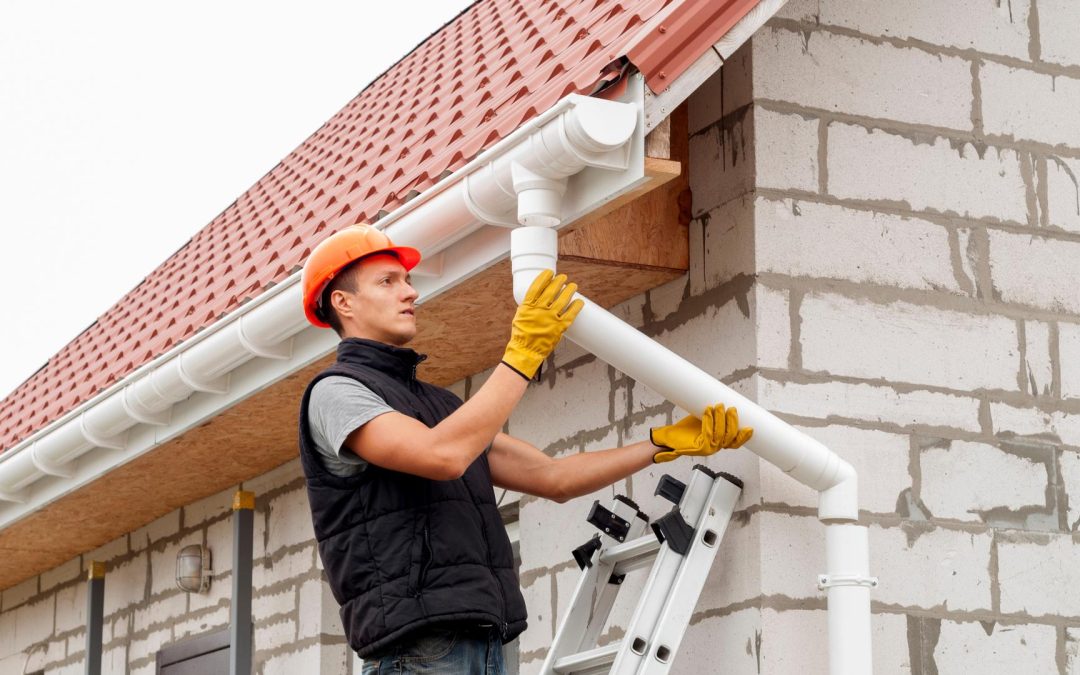Keeping your gutter downpipes clear is essential for maintaining the structural integrity of your home. When downpipes become clogged, they can cause water to overflow, leading to potential damage to your property’s foundations, exterior walls, and landscaping. Regular cleaning ensures that rainwater drains efficiently, protecting your home from water-related issues. This comprehensive guide will walk you through the process of cleaning your gutter downpipes effectively.
Why Clean Your Downpipes?
Before delving into the cleaning process, it’s important to understand why this task is crucial. Downpipes, part of your guttering system, are designed to channel rainwater from the roof to the ground or drainage system. Leaves, debris, and even nesting materials from birds can block these pipes. When blocked, water can back up, causing overflow and potential damage.
What You’ll Need
To clean your downpipes efficiently, gather the following tools:
- Sturdy ladder
- Gloves
- Gutter scoop or a small plastic spade
- Hose with a high-pressure nozzle
- Plumber’s snake or a long piece of stiff wire
- Bucket for collecting debris
- Safety glasses
Ensure your safety by using a ladder stabiliser or having someone hold the ladder while you work.
Step 1: Safety First
Safety should always be your top priority. Ensure that the ladder is secure and wear gloves and safety glasses to protect your hands and eyes from sharp debris and splashing water.
Step 2: Remove Debris from Gutters
Begin by removing any loose debris from the gutters. Use a gutter scoop or a small spade to clear out leaves, twigs, and sediment. Deposit the collected material into a bucket. This step prevents additional blockage when you begin flushing the downpipes.
Step 3: Check the Downpipe for Obvious Blockages
Before using water, visually inspect the entrance of the downpipe for visible blockages. Sometimes, the obstruction is near the top and can be removed by hand or with the help of a tool.
Step 4: Flush the Downpipe with Water
Attach a high-pressure nozzle to your hose and direct the water into the downpipe. The pressure should help dislodge any blockages. If water backs up, this indicates a clog within the pipe.
Step 5: Use a Plumber’s Snake
If flushing doesn’t clear the obstruction, use a plumber’s snake. Insert the snake into the downpipe and gently push it down, twisting and pushing to break apart the blockage. Once you feel less resistance, pull the snake out, which should bring some of the debris with it.
Step 6: Test the Flow
After clearing the blockage, test the flow by running water through the gutter and downpipe again. Observe if the water flows freely. If not, repeat the flushing and snaking steps until the water drains without hindrance.
Step 7: Regular Maintenance
To avoid frequent clogs, regularly clean your gutters and downpipes. Twice a year should suffice: once in late spring and again in early autumn. Consider installing gutter guards to minimise the amount of debris entering the system.
Conclusion
Cleaning your gutter downpipes is a straightforward yet vital part of home maintenance. By following these steps, you can ensure that your gutter system functions efficiently, protecting your home from water damage. Regular checks and cleaning will save you time and money in the long run by preventing major repairs. Remember, a little preventive maintenance can go a long way towards safeguarding your home against the elements.


Recent Comments